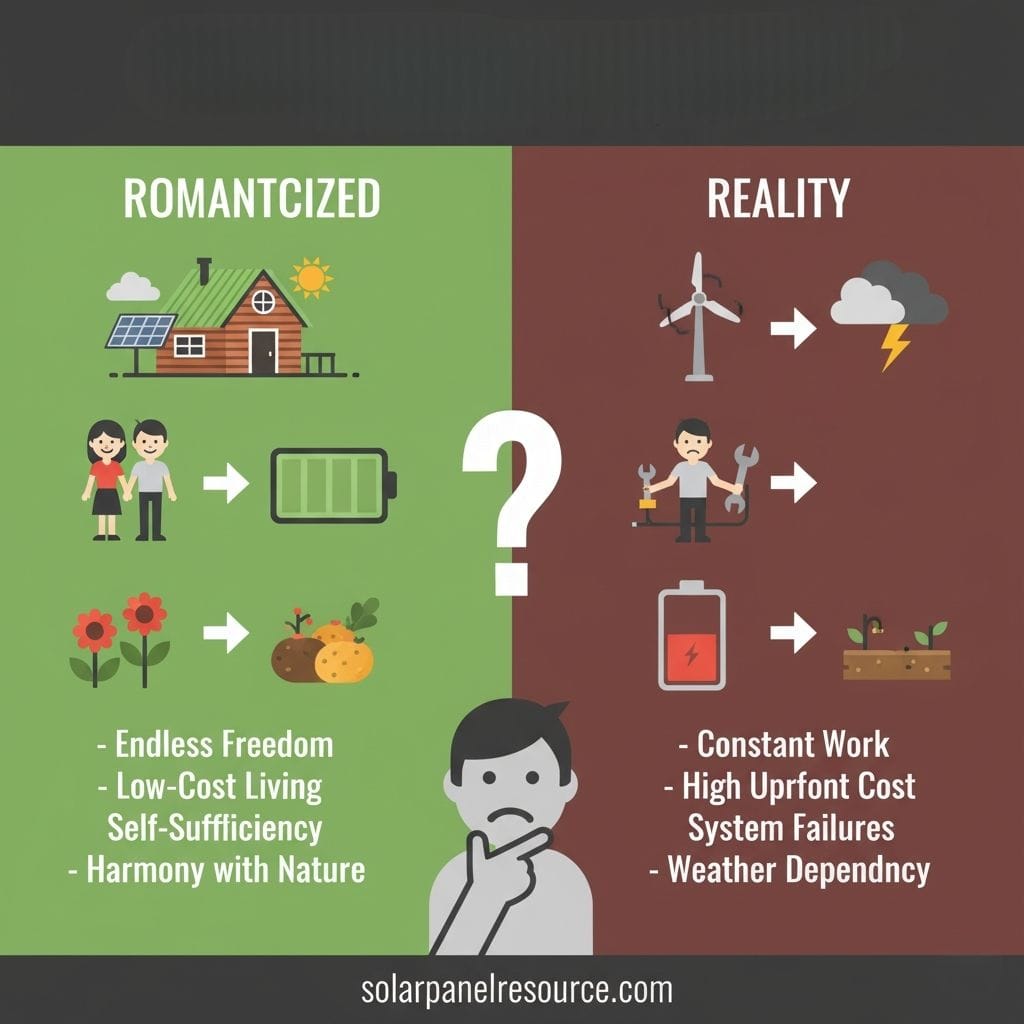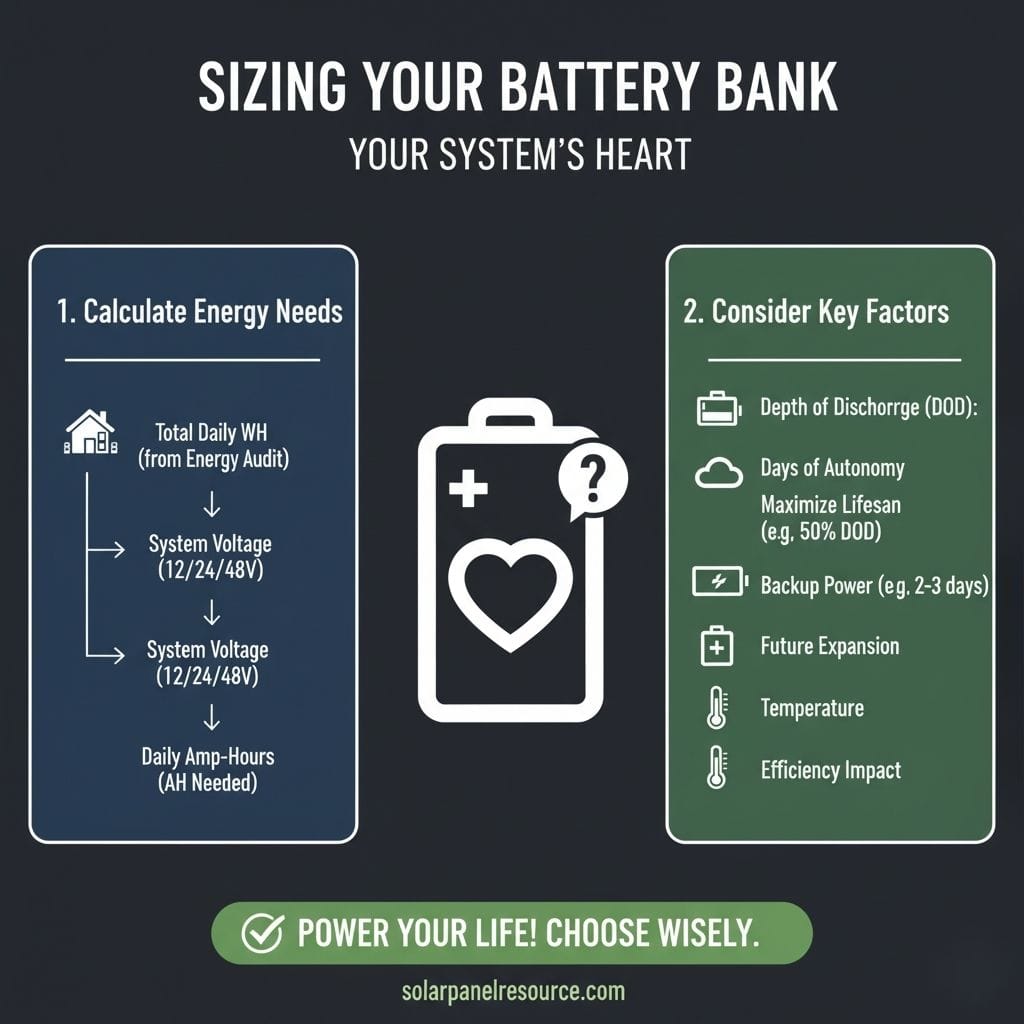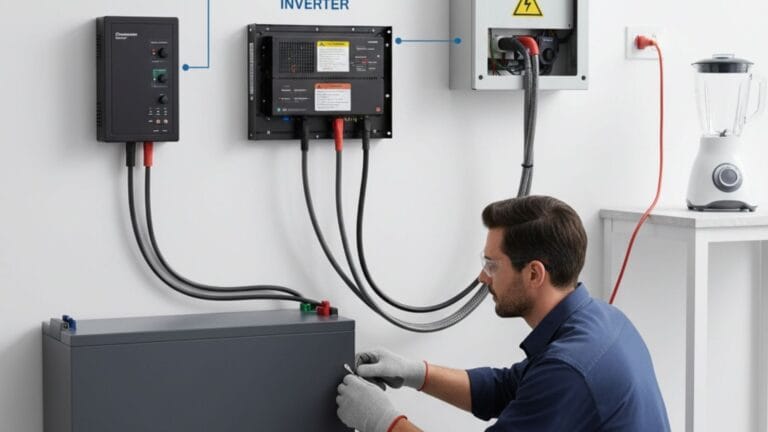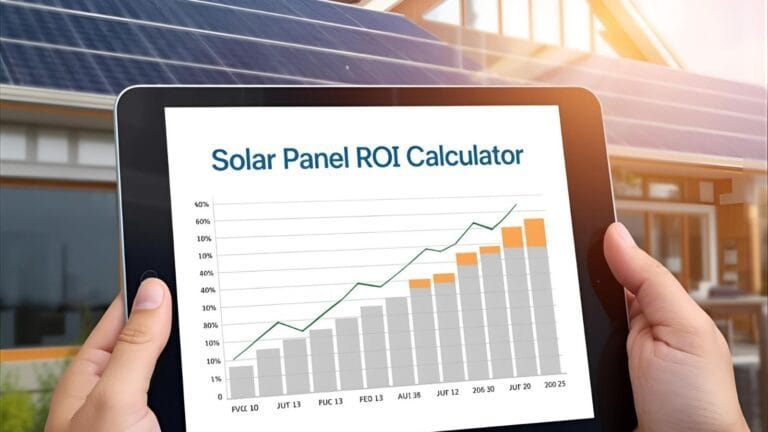The Ultimate Guide to Building an Off-Grid Solar System for Your Home
The dream of energy independence is a powerful one. Cutting ties with the utility, producing your own clean power, and achieving true self-sufficiency is the ultimate goal for many. This dream is made possible by an off-grid solar system, a standalone power station tailored for your home. But unlike a standard grid solar kit which is a simple supplement, going off-grid is a significant engineering and lifestyle commitment.
This is not a simple DIY project; it’s the process of designing and building your own private power utility. This guide is designed to be your definitive resource for 2025. We will walk you through the essential steps of planning, calculating, and sizing a complete off-grid solar system. We will cover the core components, the critical calculations, and the hard truths you need to face before you decide to cut the cord for good.
What Does “Off-Grid” Truly Mean? Beyond the Buzzword
Living off-grid means you are 100% disconnected from the public electricity grid. There are no power lines running to your property. You are solely responsible for generating, storing, and managing every single watt of electricity your home consumes. It’s a closed loop: the sun provides the energy, solar panels collect it, batteries store it, and you use it. When the stored energy runs out, the lights go off until your panels can generate more.
The Hard Truths of Living Off-Grid: Is It Really for You?

Before we touch a single calculation, it’s crucial to understand the reality of the off-grid lifestyle. The romance of energy freedom comes with serious responsibilities that are often glossed over.
You Are Your Own Utility Company
When a storm knocks out the power, there’s no utility crew to call. You are the system operator, the maintenance technician, and the troubleshooter. This means you are responsible for monitoring your system’s health, performing regular maintenance (like checking battery connections and cleaning panels), and diagnosing any problems that arise.
The Upfront Cost is Significant
An off-grid solar system is substantially more expensive than a grid-tied system of the same generating capacity. Why? The battery bank. You need a large, robust battery bank to store enough energy to power your home through nights and, more importantly, through consecutive cloudy days. This can often double the total cost of the project.
A Lifestyle of Conscious Energy Consumption
Living off-grid forces you to become acutely aware of your energy usage. You can’t run multiple high-power appliances without thinking about the impact on your battery storage. It’s a shift from unconscious consumption to mindful, active energy management. On cloudy winter days, you may need to consciously reduce your usage to ensure you have power for the essentials.
Step 1: The Energy Audit – Calculating Your Daily Load
You cannot design a system without knowing exactly how much power you need. This is the most critical step. Sizing your system is not about guesswork; it’s about data. This process is called a load calculation.
Listing Your Appliances and Their Wattage
Create a spreadsheet and list every single electrical device you plan to use in your home. Find the power consumption (in watts) for each one, which is usually found on a sticker on the device or in its manual.
Estimating Daily Hours of Use
Next to each device, realistically estimate how many hours per day you will use it. Be honest and even slightly overestimate. For example:
- LED Lights (10 watts each, 10 bulbs): 100 watts total x 6 hours/day
- Efficient Refrigerator (150 watts): Runs ~8 hours/day (compressor cycle)
- Laptop (65 watts): 8 hours/day
- Well Pump (1000 watts): 1 hour/day
The Magic Number: Your Total Daily Watt-Hours
Multiply the wattage of each device by its hours of use to get the daily “watt-hours” (Wh). Add up this column for every device to get your total daily energy consumption. For example:
- Lights: 100W x 6h = 600 Wh
- Refrigerator: 150W x 8h = 1200 Wh
- Laptop: 65W x 8h = 520 Wh
- Well Pump: 1000W x 1h = 1000 Wh
- Total Daily Load: 3,320 Wh, or 3.32 kWh
Step 2: Sizing Your Battery Bank – Your System’s Heart

Your battery bank is the core of your system’s reliability. It provides power at night and during bad weather. Sizing it correctly is paramount.
Your battery bank is the core of your system’s reliability. To understand the technology in-depth, read our ultimate guide to how solar batteries work.
Determining Your “Days of Autonomy”
First, decide how many days you want your system to run with zero solar input (e.g., during a snowstorm or a long stretch of cloudy weather). This is your days of autonomy. A common choice is 2-3 days for most residential applications. More days of autonomy means a larger, more expensive battery bank.
Calculating Your Required Battery Capacity
To size your battery bank, you’ll need to do a few calculations. This process is outlined in guides from sources like the U.S. Department of Energy’s Energy Saver website.
- Total Energy Storage Needed: Multiply your daily watt-hours by your days of autonomy. (e.g., 3,320 Wh/day * 3 days = 9,960 Wh).
- Factor in Inverter Inefficiency: Your inverter wastes a little power. Multiply by 1.2 to be safe. (9,960 Wh * 1.2 = 11,952 Wh).
- Convert to Amp-Hours: Divide by the voltage of your battery bank (typically 12V, 24V, or 48V for off-grid systems). Let’s use 48V. (11,952 Wh / 48V = 250 Ah).
- Account for Depth of Discharge (DoD): You should not drain your batteries completely. For lithium batteries, you can use about 80% (0.8 DoD). For lead-acid, it’s closer to 50% (0.5 DoD). Divide your Amp-hours by the DoD. (250 Ah / 0.8 DoD = 312.5 Ah).
You would need a 48V battery bank with at least 312.5 Ah of capacity.
Step 3: Sizing Your Solar Array – The Power Plant
Your solar array must be large enough to fully recharge your battery bank while also powering your home’s daytime loads.
Finding Your Location’s “Peak Sun Hours”
This is the average number of hours per day that the sun’s intensity equals 1,000 watts per square meter. It is NOT the same as “hours of daylight.” A location in sunny Arizona might get 6 peak sun hours in winter, while a location in the cloudy Pacific Northwest might only get 2. You can find this data from online solar resource maps.
Calculating the Required Solar Panel Wattage
To properly size your solar array, divide your total daily energy consumption (in Wh) by your location’s peak sun hours (using the worst-case, winter value for year-round living).
Formula: Daily Watt-Hours / Peak Sun Hours = Required Solar Array Wattage.
Example: 3,320 Wh / 3 peak sun hours = 1,107 watts. To account for system losses, it’s wise to multiply this by 1.25. (1,107 * 1.25 = 1,384 watts). You would need a solar array of at least 1,400 watts.
Step 4: Choosing the Core Components – The Brains of the Operation
Beyond panels and batteries, you need two critical electronic components.
The Off-Grid Inverter: From DC to AC
The inverter converts the Direct Current (DC) power from your batteries into the Alternating Current (AC) power that your appliances use. Your inverter must be large enough to handle the maximum power draw of all your appliances running at once. It must also be a specialized **off-grid inverter** or hybrid inverter capable of forming its own stable grid.
The Solar Charge Controller: Protecting Your Batteries
This device sits between your solar panels and your battery bank. Its job is to regulate the voltage and current coming from the panels to prevent overcharging and damaging your expensive batteries. An MPPT (Maximum Power Point Tracking) charge controller is the modern, efficient standard.
Off-Grid vs. Grid-Tied with Battery Backup: A Key Distinction
Many people confuse a true off-grid system with a grid-tied system that has battery backup (also called a hybrid system). In a hybrid system, you are still connected to the grid. The grid acts as your primary backup, and your battery is used to power essential loads during an outage. A true off-grid system has no grid solar power connection to fall back on.
Many people confuse true off-grid with a grid-tied system that has batteries, also known as a hybrid solar system.
What is the average cost of an off-grid solar system?
The cost varies dramatically based on your energy needs. A small cabin system might cost $10,000-$20,000, while a system for a modern, full-sized family home can easily exceed $50,000-$70,000 due to the large battery bank required.
What kind of batteries are best for off-grid?
Lithium-ion (specifically LFP or LiFePO4) batteries have become the gold standard. They are more expensive upfront than traditional lead-acid batteries but last much longer, can be discharged more deeply, are more efficient, and require no maintenance.
Can I install an off-grid system myself?
While some people with advanced electrical skills do DIY their systems, it is extremely risky. Dealing with high-voltage DC electricity and complex components can be dangerous. For safety and reliability, it is highly recommended to work with a certified, experienced off-grid solar installer.

Solar Energy Enthusiast & Renewable Energy Researcher
Vural’s journey into solar energy began four years ago, driven by frequent power outages and high electricity bills at his own home. He has since gained hands-on experience with both personal and commercial solar projects. At solarpanelresource.com, Vural shares his real-world insights and in-depth research to guide homeowners and business owners on their own path to energy independence.







